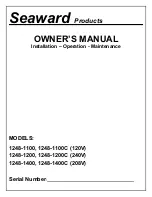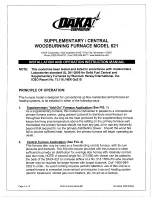
COOKING VESSEL SELECTION
The physical characteristics of pots and pane influence the performance of cooking. Heat is
transferred through the glass top to the cooking vessel. Proper contact of the cooking vessel the
stove top will assure heat is readily absorbed. Vessels with the following characteristics will work well.
Flat Bottom:
use pans with bottoms that become flat when heated. In the cold state, the pan bottom
must be slightly concave, I.e. must have small center bow; the size of the bow depends on the
material, the thickness, and the diameter of the pan bottom. The entire bottom should touch the
heating area in order to allow for even heat distribution. This will help eliminate “hot spots” which may
scorch or burn food. One way to check the concavity of the pan bottom is to place a straightedge ruler
parallel to the bottom of the pan.
If your cookware spins on the cooking surface, it means that a small bow has formed toward
the stove top during heating. Do not use this cookware.
RIGHT
WRONG
Warped pan
Warped pan
Warped pan
Corrected Diameter:
The Diameter of the vessel should be the same as the diameter of the glowing
heat zone.
Good Balance:
Your pan should always be level on the cooking surface, with or without food in it. It
will make good contact with the heating area for uniform heat distribution.
WRONG
Thick Bottom:
pans with thick bottoms are also effective in eliminating hot spots by providing good
heat distribution. In general, you should not use a vessel with a bottom less than 1/16”.
THE MATERIAL OF THE VESSEL ALSO INFLUENCES COOKING
PERFORMANCE.
Stainless Steel: Used for sauces, soups, vegetables and egg cookery. It responds
relatively
slowly to temperature changes. The best stainless steel utensils have thick “sandwich” bottoms where
a layer of aluminum or copper lies between layers of stainless steel.


























